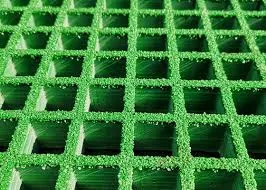
-
 Afrikaans
Afrikaans -
 Albanian
Albanian -
 Amharic
Amharic -
 Arabic
Arabic -
 Armenian
Armenian -
 Azerbaijani
Azerbaijani -
 Basque
Basque -
 Belarusian
Belarusian -
 Bengali
Bengali -
 Bosnian
Bosnian -
 Bulgarian
Bulgarian -
 Catalan
Catalan -
 Cebuano
Cebuano -
 China
China -
 China (Taiwan)
China (Taiwan) -
 Corsican
Corsican -
 Croatian
Croatian -
 Czech
Czech -
 Danish
Danish -
 Dutch
Dutch -
 English
English -
 Esperanto
Esperanto -
 Estonian
Estonian -
 Finnish
Finnish -
 French
French -
 Frisian
Frisian -
 Galician
Galician -
 Georgian
Georgian -
 German
German -
 Greek
Greek -
 Gujarati
Gujarati -
 Haitian Creole
Haitian Creole -
 hausa
hausa -
 hawaiian
hawaiian -
 Hebrew
Hebrew -
 Hindi
Hindi -
 Miao
Miao -
 Hungarian
Hungarian -
 Icelandic
Icelandic -
 igbo
igbo -
 Indonesian
Indonesian -
 irish
irish -
 Italian
Italian -
 Japanese
Japanese -
 Javanese
Javanese -
 Kannada
Kannada -
 kazakh
kazakh -
 Khmer
Khmer -
 Rwandese
Rwandese -
 Korean
Korean -
 Kurdish
Kurdish -
 Kyrgyz
Kyrgyz -
 Lao
Lao -
 Latin
Latin -
 Latvian
Latvian -
 Lithuanian
Lithuanian -
 Luxembourgish
Luxembourgish -
 Macedonian
Macedonian -
 Malgashi
Malgashi -
 Malay
Malay -
 Malayalam
Malayalam -
 Maltese
Maltese -
 Maori
Maori -
 Marathi
Marathi -
 Mongolian
Mongolian -
 Myanmar
Myanmar -
 Nepali
Nepali -
 Norwegian
Norwegian -
 Norwegian
Norwegian -
 Occitan
Occitan -
 Pashto
Pashto -
 Persian
Persian -
 Polish
Polish -
 Portuguese
Portuguese -
 Punjabi
Punjabi -
 Romanian
Romanian -
 Russian
Russian -
 Samoan
Samoan -
 Scottish Gaelic
Scottish Gaelic -
 Serbian
Serbian -
 Sesotho
Sesotho -
 Shona
Shona -
 Sindhi
Sindhi -
 Sinhala
Sinhala -
 Slovak
Slovak -
 Slovenian
Slovenian -
 Somali
Somali -
 Spanish
Spanish -
 Sundanese
Sundanese -
 Swahili
Swahili -
 Swedish
Swedish -
 Tagalog
Tagalog -
 Tajik
Tajik -
 Tamil
Tamil -
 Tatar
Tatar -
 Telugu
Telugu -
 Thai
Thai -
 Turkish
Turkish -
 Turkmen
Turkmen -
 Ukrainian
Ukrainian -
 Urdu
Urdu -
 Uighur
Uighur -
 Uzbek
Uzbek -
 Vietnamese
Vietnamese -
 Welsh
Welsh -
 Bantu
Bantu -
 Yiddish
Yiddish -
 Yoruba
Yoruba -
 Zulu
Zulu
Innovative Solutions for Noise Reduction Using Fiberglass Dampers in Modern Applications
Understanding Fiberglass Dampers A Comprehensive Overview
In the realm of engineering and construction, ensuring stability and safety is paramount. One of the innovative solutions to achieve this is through the use of fiberglass dampers. These mechanical devices play an essential role in controlling vibrations and energy dissipation in structures, making them a crucial component in modern architectural and engineering practices.
What are Fiberglass Dampers?
Fiberglass dampers are devices designed to absorb and dissipate motion and vibrations caused by environmental factors such as earthquakes, wind loads, and machinery operations. Made from fiberglass reinforced polymers, these dampers are known for their lightweight properties, high strength, and corrosion resistance. The combination of these characteristics makes them an attractive choice for various applications, particularly in civil engineering for buildings, bridges, and industrial structures.
The Importance of Dampers in Structural Engineering
Structural integrity is vital for the longevity and safety of buildings and infrastructure. In an era where natural disasters like earthquakes are prevalent, the importance of energy-dissipating components like dampers cannot be overstated. Dampers work by absorbing the energy generated by vibrational forces. Without the presence of dampers, structures can suffer from excessive swaying or oscillations, potentially leading to catastrophic failures.
Fiberglass dampers have gained popularity because they offer a more flexible solution compared to traditional damping materials such as metals. They provide effective vibration control while minimizing the weight added to the structure, which is crucial in the design phases of lightweight structures.
Advantages of Fiberglass Dampers
1. Lightweight Design The primary advantage of fiberglass dampers is their lightweight nature. This characteristic allows for easier handling and installation, reducing labor costs and construction time.
3. Corrosion Resistance Unlike metal dampers, fiberglass is not susceptible to rust or corrosion, particularly when exposed to moist or aggressive environmental conditions. This longevity translates to lower maintenance and replacement costs over time.
fiberglass damper

4. Versatility Fiberglass dampers can be engineered to meet specific damping requirements, making them versatile in the types of construction projects they can be used in—from residential buildings to large infrastructural developments.
5. Thermal Stability Fiberglass can withstand a range of temperatures without losing its mechanical properties. This feature ensures that dampers maintain effectiveness in various climates.
Applications of Fiberglass Dampers
Fiberglass dampers find their application in a variety of fields
- Seismic Protection In earthquake-prone areas, fiberglass dampers are crucial for safeguarding buildings by minimizing vibrations and structural shifts.
- Bridge Construction They are employed in bridge engineering to mitigate the effects of wind and traffic-induced vibrations, ensuring the safety and longevity of these critical structures.
- Industrial Facilities In manufacturing plants where heavy machinery operates, fiberglass dampers can control the vibrations that could otherwise disrupt operations or damage equipment.
- Wind Energy Wind turbines benefit from fiberglass damping solutions to enhance stability and performance by counteracting the oscillations caused by wind forces.
Conclusion
As the world continues to evolve with innovative engineering solutions, fiberglass dampers stand at the forefront of modern construction technology. Their unique properties make them not only effective in controlling vibrations but also practical from a logistical perspective. As we look toward the future of infrastructure development, the integration of fiberglass dampers into design and construction practices will undoubtedly aid in creating safer, more resilient environments. Whether it’s addressing the challenges of natural disasters or enhancing the longevity of structures, fiberglass dampers prove to be an invaluable asset in the architectural landscape. As research and technology continue to advance, we can expect even more refined applications and improvements in the performance of these essential devices.









